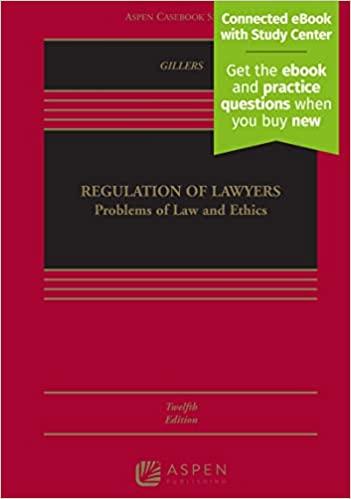Question
Rising rates of obesity in adults and children the U.S. have focused attention on preventing excessive weight gain by Americans. Two state representatives, Jack Sprat
Rising rates of obesity in adults and children the U.S. have focused attention on preventing excessive weight gain by Americans. Two state representatives, Jack Sprat and Tom Thumb, will be introducing bills next month to address what they call the obesity epidemic in your state. Their concerns stem from the likely effects of obesity: increased risks of chronic disease, morbidity, and mortality, and related increases in medical, psychological, and social costs. They want to focus on prevention because obesity can persist from childhood into adulthood and there is a paucity of successful treatment options for the condition. Prevention strategies typically fall into two broad areas: (1) those that aim to decrease the daily caloric intake of Americans; and (2) those that aim to increase the physical activity of Americans. The obvious premise behind these strategies is that an individual's weight can be reduced either by lowering energy intake and/or increasing energy output. These strategies have not resulted in reducing U.S. rates of obesity. More recently, research has highlighted the role of carbohydrates, especially sugar, in triggering weight gain. Therefore, Reps. Sprat and Thumb want to focus on foods that have little or no nutritional value.
Sprat and Thumb's proposed law would regulate how individual servings of soft drinks and snack foods would be sold at movie theatres, sporting events and fast food restaurants. It limits the number of calories permitted in any individual serving of food or drink. Under this law, no single serving of any soft drink can exceed 250 calories, and no single serving of any snack food can exceed 350 calories. Consequently, popular 'supersizes' of soft drinks, popcorn, fries, candy bars, etc. could no longer be sold. Only smaller single servings that meet the calorie limitation could be sold in these places. Anyone who sells food or drink in violation of this law will be fined $2,000 per sale.
Sprat and Thumb want your legal analysis of their proposal. They do not want to waste their time if the state cannot enact this into law. In your analysis you must include: the specific claim (or challenge) that someone opposed to the law would likely make, explain the law governing this kind of claim, explain the arguments each side (the challengers and the state) would be likely to make, and finally, whether you think the challengers would succeed or not, should a court hear their claim. Key terms (commerce clause, interstate commerce, state power, right to liberty, constitutional right, government power)
Please answer all questions
1. Identify the legal question in the case
-Can Sprat and Thumb successfully propose a regulation to limit the number of calories permitted in individual portions of food/drink?
2. Identify the legal right at stake(Accurately identifies the legal right at stake and the person who has that right and can claim his/her right is violated)
3. Identify the legal principle that applies
4. Identify the standard of review(Accurately states the standard of review that applies and what it requires)- The three general standards of review: questions of law, questions of fact, and matters of procedure or discretion.
5. Identify the government's goal(Accurately describes the government's specific goal in having this law and how important it is)
6. Identify the means used to achieve goal(Accurately describes what the law requires, forbids or permits and how this is intended to achieve goal )
7. Arguments that right is violated(Accurately identifies and explains how law interferes with right and what facts and legal precedent support that conclusion; clearly explains reasoning; any factual assumptions are stated.)
8. Arguments that right is not violated(Accurately identifies and explains how law does not violate the right at stake and what facts and legal precedent support that conclusion; clearly explains reasoning; any factual assumptions are stated. Sources of law
9. Conclusion Reached(All conclusions explicitly stated; consistent with and based on accurate analysis)
Step by Step Solution
There are 3 Steps involved in it
Step: 1

Get Instant Access to Expert-Tailored Solutions
See step-by-step solutions with expert insights and AI powered tools for academic success
Step: 2

Step: 3

Ace Your Homework with AI
Get the answers you need in no time with our AI-driven, step-by-step assistance
Get Started


